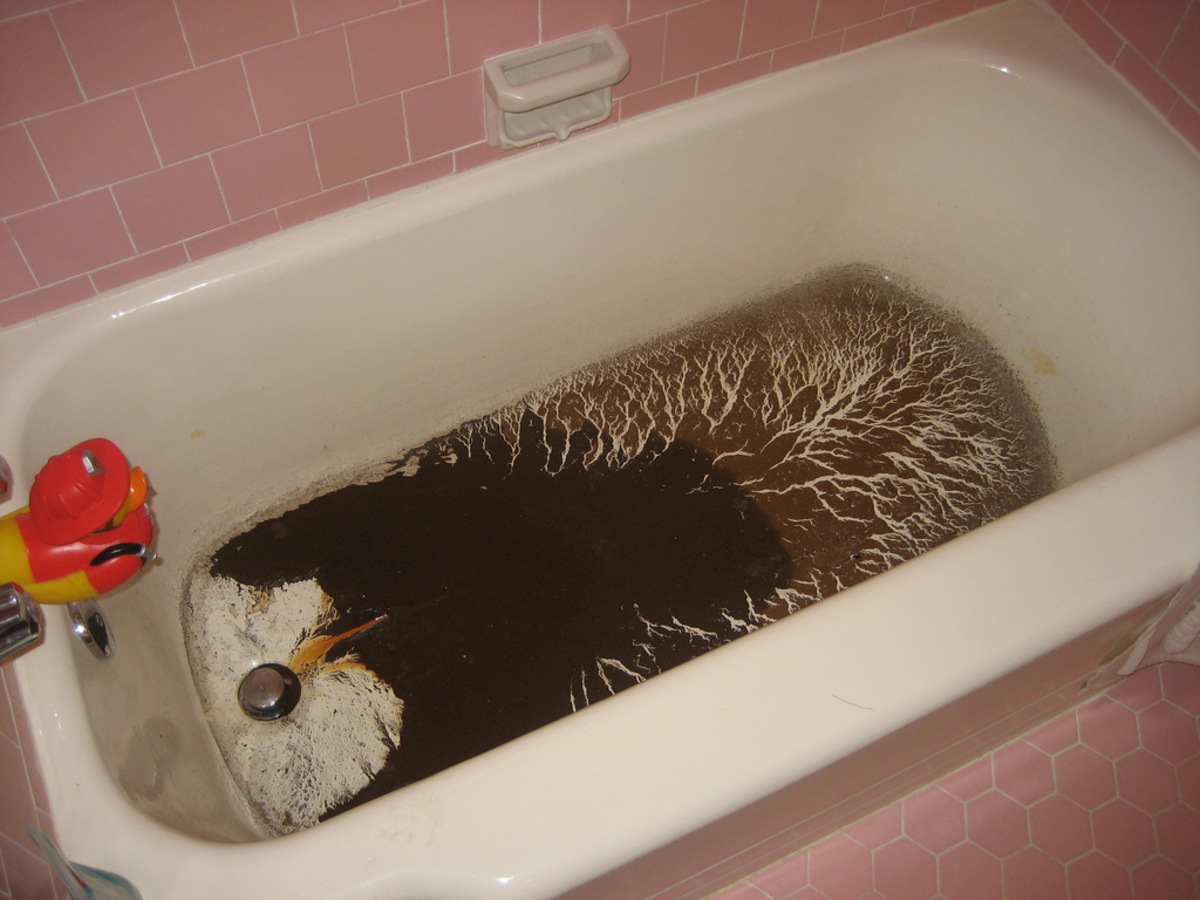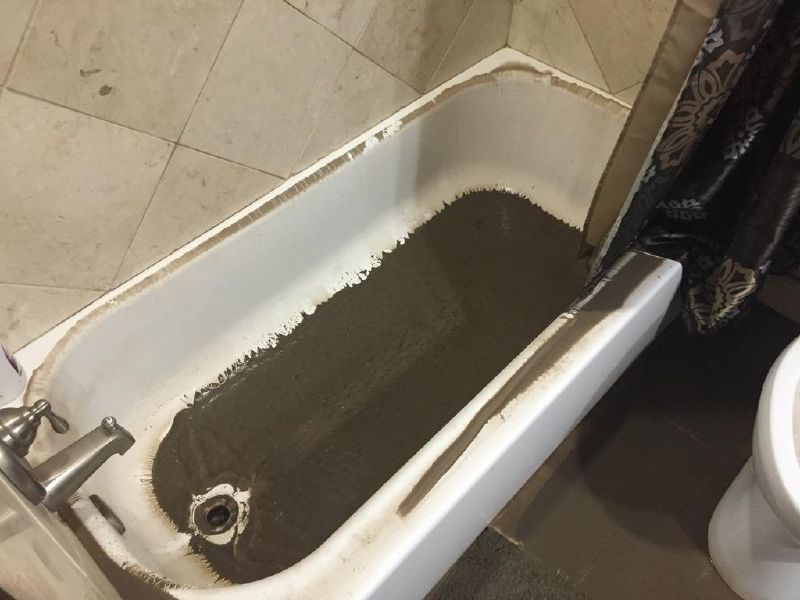Unpacking the Causes of Discharge in the Bathtub
Unpacking the Causes of Discharge in the Bathtub
Blog Article
This post listed below involving Why is Sewage Backing Up Into My Bathtub? is incredibly informative. Have a go and make your own final thoughts.

Sewage back-up in the bathtub can be a traumatic and unsanitary problem for any type of property owner. Not just is it inconvenient, yet it also postures major health dangers and indicates underlying problems with the plumbing system. Recognizing why sewage is showing up with the bath tub is important for taking appropriate action to resolve the problem properly.
Introduction to the Concern
Common Reasons for Sewer Back-up
Blockages in the Drain Line
One of one of the most usual reasons for sewage back-up is an obstruction in the drain line. This can happen due to the accumulation of debris, oil, or international things in the pipes, stopping appropriate circulation and creating sewage to support right into your bath tub.
Tree Origin Invasion
Tree roots looking for moisture and nutrients can penetrate sewer lines via tiny cracks or joints. With time, these origins can grow and increase, causing substantial damages to the pipelines and causing sewage back-up problems.
Understanding the Trouble
When sewage draws back up into the tub, it's a clear sign of a trouble with the water drainage system. The wastewater that ought to be flowing far from your home is instead finding its back into your space, which can result in substantial damage and health hazards.
Possible Causes
Several aspects can contribute to sewage back-up in the tub. From obstructions in the sewage system line to problems with the plumbing framework, identifying the origin is vital for locating a service.
Aging Facilities
Older homes might have obsoleted plumbing systems that are more vulnerable to deterioration, splits, and wear and tear. As pipes age, they end up being much more susceptible to leaks and clogs, boosting the probability of sewage backup cases.
Heavy Rainfall or Flooding
Throughout durations of heavy rainfall or flooding, the sewer system might end up being overwhelmed with excess water, creating back-ups and overflows. This can cause sewage backing up into tubs and various other fixtures inside the home.
Signs of Sewage Backup
Foul Odors
Unpleasant smells emanating from drains pipes or fixtures, especially in the restroom, might suggest sewer backup concerns. These odors are commonly strong and relentless, indicating a problem that needs immediate interest.
Slow Draining Fixtures
Bathtubs, sinks, and toilets that drain pipes slowly or otherwise at all could be experiencing sewer back-up. If several fixtures are affected all at once, it's likely that the concern originates from a typical factor, such as the major sewer line.
Gurgling Sounds
Strange gurgling or gurgling sounds coming from drains pipes when water is running somewhere else in your house are indicative of air caught in the plumbing system. This air build-up can result from sewer back-up and must be explored quickly.
Wellness Risks Connected With Sewer Back-up
Contamination of Water
Sewage backup can pollute the water in your home, positioning a severe health and wellness danger to you and your family members. Exposure to infected water can cause gastrointestinal concerns, skin infections, and other health problems.
Mold Growth
Dampness from sewage backup can produce excellent conditions for mold growth in your home. Mold spores can intensify breathing problems and cause allergic reactions in sensitive individuals, making prompt cleanup vital.
Spread of Condition
Sewer has harmful bacteria, viruses, and parasites that can cause a variety of illness, including hepatitis, cholera, and gastroenteritis. Coming into contact with sewer or infected surface areas places you in danger of infection.
Cleaning Up After Sewer Backup
Disinfection Procedures
Completely decontaminate and disinfect influenced locations after sewage backup to eliminate harmful germs and avoid mold growth. Usage proper cleaning products and safety equipment to make certain risk-free and reliable cleanup.
Repair of Impacted Locations
Repair any damage to flooring, walls, or components caused by sewer back-up. Depending on the extent of the damages, you may need to change carpets, drywall, or other products to restore your home to its pre-loss condition.
Immediate Actions to Take
Switching Off Water
In case of sewage backup, it's essential to switch off the supply of water to prevent more contamination and damage. Situate the primary water shutoff valve in your house and closed it off until the problem can be fixed.
Contacting an Expert Plumber
Dealing with sewer backup is not a do it yourself job. Get in touch with a licensed plumber with experience in taking care of sewage-related problems to evaluate the scenario and execute necessary repair work or clean-ups.
Preventing Contact with Polluted Water
Until the sewage back-up is solved, avoid contact with contaminated water to prevent the spread of germs and virus. Wear protective gear if you have to be in the afflicted area and clean your hands thoroughly afterward.
Safety nets
Normal Maintenance of Sewage System Lines
Arrange normal evaluations and upkeep of your drain lines to identify and attend to potential concerns before they escalate right into major troubles. This can include cleaning debris, checking for tree root breach, and repairing any kind of damaged pipes.
Installing Bayou Shutoffs
Consider installing backwater shutoffs in your plumbing system to avoid sewer from receding into your home during periods of heavy rainfall or flooding. These valves immediately close when water draws back up, shielding your residential property from contamination.
Correct Disposal of Household Waste
Stay clear of purging anything apart from bathroom tissue and human waste down the toilet to prevent blockages and obstructions in the drain line. Dispose of oil, oil, and various other family chemicals effectively to decrease the threat of plumbing issues.
Why Is Water Backing Up in My Bathtub When I Flush My Toilet?
What to do about a sewer line clog
First, don’t bother with plunging. No amount of plunging will dislodge the clog in a sewer line. The clog is too far away. Plungers are for clogs in the toilet itself, not the sewer line. Plus, the most likely causes of a sewer clog are:
Tree roots Flushed toys or feminine products Grease buildup Those items don’t move easily. And in the case of tree roots, the roots need to be cut out of the pipe and the pipe will need to be repaired.
You’ll need a closet auger. A closet auger is a type of plumber’s snake with a protective cover to keep from scratching the delicate porcelain toilet. If the clog is further down, you may need to remove the toilet or use one of your cleanouts to get to the clog.
We also recommend doing a video inspection of the drain to ensure that the cause of the clog has been completely removed. Otherwise, you could have the same problem again in a few days or weeks.
https://mspplumbingheatingair.com/blog/why-is-water-backing-up-in-my-bathtub-when-i-flush-my-toilet

As an avid reader about What to Do if Sewage Starts Coming Up Through Your Bathtub, I figured sharing that post was a great idea. Please take a moment to promote this entry if you appreciated it. I treasure your readership.
Quote & Schedule
Report this page